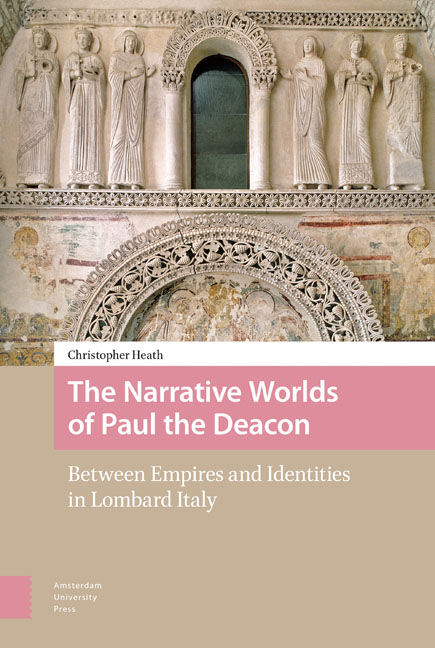Book contents
- Frontmatter
- Dedication
- Contents
- List of Tables and Diagrams
- Acknowledgements
- List of Abbreviations
- Introduction
- 1 Vir valde Peritus: Paul the Deacon and his Contexts
- 2 The Early Narratives
- 3 The Historia Langobardorum: The Structure of Paul’s World
- 4 The Historia Langobardorum: The Six Books in Detail
- 5 Conclusion
- Bibliography
- Index
- Frontmatter
- Dedication
- Contents
- List of Tables and Diagrams
- Acknowledgements
- List of Abbreviations
- Introduction
- 1 Vir valde Peritus: Paul the Deacon and his Contexts
- 2 The Early Narratives
- 3 The Historia Langobardorum: The Structure of Paul’s World
- 4 The Historia Langobardorum: The Six Books in Detail
- 5 Conclusion
- Bibliography
- Index
Summary
In thanking William Dudley Foulke (1848-1935) for his English translation of Paul the Deacon's (c. 725-c. 796) Historia Langobardorum, first published in 1907, the American president, Theodore Roosevelt (1858-1919) declared: ‘What a delightful old boy the Deacon was; and what an interesting mixture of fact and fable he wrote’. Paul's works, of course, can be analysed as more than just an ‘interesting mix’, but Roosevelt's reaction was testament to the abiding human value of Paul's narratives. In the same way that buildings can be read as ‘ensembles of structures, images and performances rather than as isolated plans and elevations’, so too the four prose narratives of Paul the Deacon can be considered as a vital window upon the thought and opinions of one of the most significant intellectuals of the Carolingian age. ‘Writing is [only] one way of giving shape to the past’, but even so, despite the transit of 1200 years it is remarkable how much of Paul's narratives still frame and determine modern versions of early medieval Italian history. This book looks at the narrative structures of Paul the Deacon's principal prose works. It considers the ensemble of structures, images, ideas, and viewpoints together with their apparent ambiguities and contradictions.
Paul's works have often been ‘looted’ by historians using isolated details to support empirical argument without adequate consideration of the contexts behind either the author or the works themselves. This is similar to the kind of exploitation identified by Heinzelmann and Wallace-Hadrill in respect to Gregory of Tours (538-594) and Bede (672/3-735). The difficulty that links all three of these early medieval writers is that, for modern commentators, much of their narrative histories remain the only extant witness to the events that they describe. Thus, at the outset, this study intends to avoid the extraction of empirical data from the narratives. Instead, it seeks to demonstrate the dynamic creative tensions in Paul's works. Attention will be spent on the building blocks of Paul's prose narratives – in other words the foundations of his texts, the security of our versions of his works, and most importantly, his sources and how Paul set about consciously to organise and structure his work to convey meaning and significance.
- Type
- Chapter
- Information
- The Narrative Worlds of Paul the DeaconBetween Empires and Identities in Lombard Italy, pp. 15 - 18Publisher: Amsterdam University PressPrint publication year: 2017

